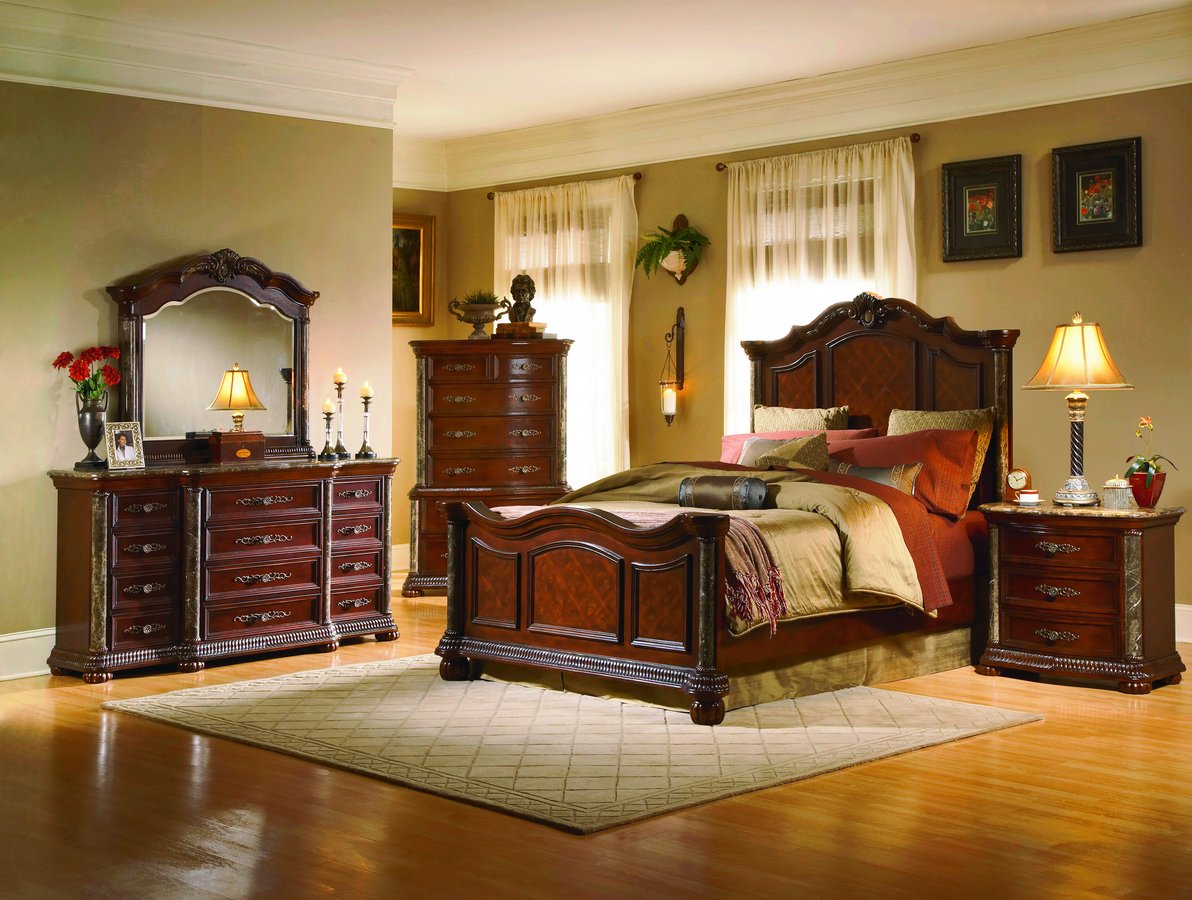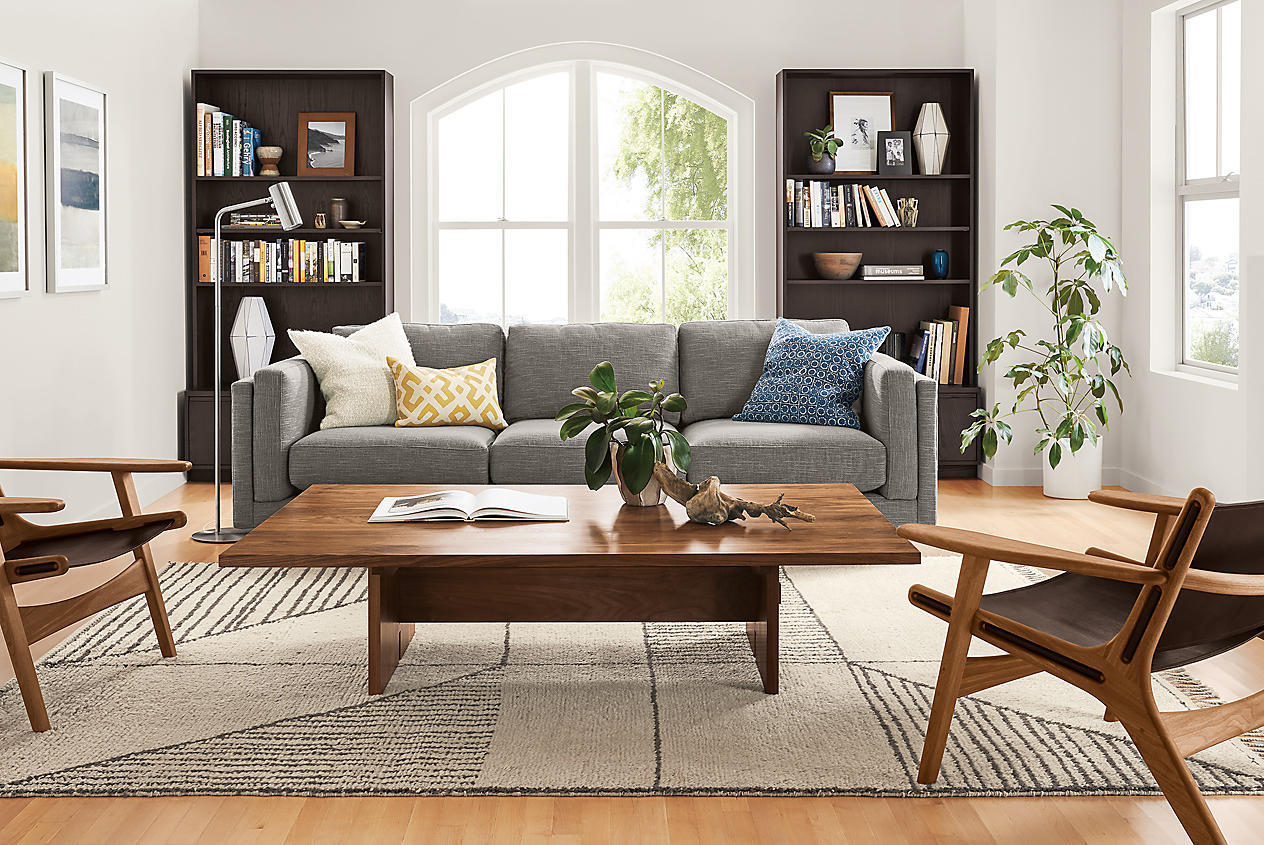Understanding Color Harmony: Mixing Wood Furniture Colors In Bedroom
Color harmony plays a crucial role in creating a visually pleasing and relaxing bedroom atmosphere. By understanding the basic principles of color theory, you can effectively mix wood furniture colors to achieve a harmonious and cohesive design.
Color Theory Principles
Color theory provides a framework for understanding how colors interact and influence each other. This knowledge is essential for creating balanced and visually appealing color schemes. There are three main color harmony principles: complementary, analogous, and monochromatic.
- Complementary colors are opposite each other on the color wheel. They create a high-contrast and vibrant effect, often used to make a space feel energetic and lively. For example, a dark brown wood furniture piece paired with a bright blue wall can create a striking contrast.
- Analogous colors are adjacent to each other on the color wheel. They create a harmonious and cohesive look, often used to create a sense of calmness and tranquility. For example, using a combination of light brown, beige, and soft green furniture pieces can create a serene and inviting atmosphere.
- Monochromatic color schemes use different shades, tints, and tones of a single color. This creates a unified and sophisticated look, often used to create a sense of elegance and sophistication. For example, using various shades of brown wood furniture, from dark espresso to light oak, can create a cohesive and elegant look.
Applying Color Harmony to Bedroom Furniture, Mixing wood furniture colors in bedroom
Applying color harmony principles to bedroom furniture involves carefully selecting wood tones that complement each other and create a visually appealing and harmonious design. Here are some practical tips:
- Consider the overall color scheme of the bedroom. If the walls are painted in a light neutral color, you can choose a variety of wood tones for furniture, such as light oak, maple, or cherry. If the walls are painted in a bolder color, you might want to choose wood tones that complement the wall color, such as dark walnut or mahogany.
- Experiment with different wood finishes. For example, a distressed finish can add a rustic charm to a bedroom, while a polished finish can create a more modern and sophisticated look.
- Create a focal point with a statement piece of furniture. For example, a dark mahogany dresser can add a touch of elegance to a bedroom with light-colored walls and furniture.
Successful Color Combinations for Bedroom Furniture
Here are some examples of successful color combinations for bedroom furniture using various wood tones:
- Light and airy: Combine light oak furniture with white walls and soft blue bedding for a light and airy feel. This combination is perfect for creating a sense of spaciousness and tranquility.
- Warm and inviting: Pair cherry wood furniture with beige walls and warm brown bedding for a warm and inviting atmosphere. This combination is perfect for creating a cozy and comfortable space.
- Modern and sophisticated: Use dark walnut furniture with gray walls and black bedding for a modern and sophisticated look. This combination is perfect for creating a sleek and elegant space.
- Rustic and charming: Combine distressed pine furniture with a light green wall and natural fiber bedding for a rustic and charming feel. This combination is perfect for creating a cozy and inviting space with a touch of vintage charm.
Choosing the Right Wood Tones

Selecting the right wood tone for your bedroom furniture is crucial, as it plays a significant role in shaping the overall mood and ambiance of the space. Wood tones range from light to dark, each offering a distinct aesthetic and influencing the perception of the room’s size, brightness, and warmth.
Understanding Different Wood Tones
The choice of wood tone can profoundly impact the atmosphere of your bedroom. Light wood tones, such as maple, birch, and ash, create a sense of spaciousness, brightness, and airiness. They are often associated with modern, minimalist, or Scandinavian styles. Medium wood tones, like oak, cherry, and walnut, offer a balance between light and dark, providing a warm and inviting feel. They are versatile and can complement various styles, from traditional to contemporary. Dark wood tones, including mahogany, ebony, and rosewood, exude elegance, sophistication, and a sense of richness. They are ideal for creating a dramatic and cozy atmosphere, often found in more traditional or formal settings.
Pairing Wood Tones Effectively
The success of mixing wood tones in a bedroom depends on several factors, including room size, lighting, and personal style.
- Room Size: In smaller bedrooms, lighter wood tones can visually enlarge the space, while darker tones can make the room feel smaller.
- Lighting: Natural light complements light wood tones, enhancing their brightness. Darker wood tones, on the other hand, thrive in well-lit rooms, as they can appear dull in dimly lit spaces.
- Personal Style: Your personal preference plays a crucial role. If you favor a minimalist aesthetic, lighter wood tones are likely to resonate with you. For a more traditional or eclectic style, consider incorporating a mix of light and dark tones.
Examples of Effective Wood Tone Combinations
Here are some examples of effective wood tone combinations for bedroom furniture:
- Light and Medium: Pairing a light wood like maple with a medium wood like oak creates a balanced and harmonious look. The light tone adds brightness, while the medium tone provides warmth and depth.
- Medium and Dark: Combining a medium wood like cherry with a dark wood like mahogany adds a touch of drama and sophistication. This combination works well in larger bedrooms with ample natural light.
- Light and Dark: Mixing a light wood like birch with a dark wood like ebony creates a striking contrast that can be both modern and elegant. This combination is ideal for smaller bedrooms, as the dark wood adds a sense of grounding.
Creating a Cohesive Design

Blending different wood tones in your bedroom furniture can create a visually appealing and harmonious space. However, it’s essential to ensure that the chosen wood tones work together to create a cohesive design. A well-designed bedroom will not only be visually appealing but also feel comfortable and inviting.
Arranging Furniture with Different Wood Tones
When arranging furniture in a bedroom with different wood tones, consider the overall aesthetic you want to achieve. A good starting point is to choose a dominant wood tone for the largest piece of furniture, typically the bed frame. This will set the foundation for the overall look. You can then introduce other wood tones in smaller pieces, such as nightstands, a dresser, and a desk.
Here’s an example of how you can arrange furniture with different wood tones in a bedroom:
* Bed frame: A dark walnut bed frame provides a grounding presence and a sense of sophistication.
* Nightstands: Choose nightstands in a lighter wood tone, such as cherry or maple, to create a contrast with the bed frame and add visual interest.
* Dresser: Opt for a dresser in a mid-tone wood, like oak or hickory, to bridge the gap between the dark bed frame and the lighter nightstands.
* Desk: A desk in a light wood tone, such as birch or pine, can add a touch of brightness and create a distinct workspace within the bedroom.
This arrangement allows for a balanced blend of dark and light wood tones, creating a visually appealing and cohesive design.
Using Accents and Accessories
Accents and accessories play a crucial role in complementing the chosen wood tones and creating a cohesive look. You can use these elements to enhance the overall design and add personality to your bedroom.
* Rugs: A rug in a complementary color or pattern can help tie the wood tones together and define the space. For example, a rug with warm tones, such as beige or terracotta, can complement dark wood tones. A rug with cool tones, such as blue or gray, can complement lighter wood tones.
* Wall art: Artwork with colors that complement the wood tones can add visual interest and create a focal point. For example, a painting with warm tones, such as red or orange, can complement dark wood tones. A painting with cool tones, such as blue or green, can complement lighter wood tones.
* Throws and pillows: Throws and pillows in complementary colors or patterns can add texture and visual interest to the bedroom. Choose colors and patterns that complement the wood tones and create a cohesive look.
* Lighting: Lighting can significantly impact the overall look and feel of a room. Consider using lamps with shades in colors that complement the wood tones or with metallic finishes that add a touch of sophistication.
* Plants: Adding plants to your bedroom can bring a touch of nature and create a more inviting atmosphere. Choose plants with colors and textures that complement the wood tones.
Real-Life Examples
Here are some real-life bedroom designs showcasing successful combinations of wood tones:
* Mid-century modern bedroom: A bedroom with a dark walnut bed frame, mid-tone oak nightstands, and a light birch desk. The overall look is sophisticated and contemporary, with a balanced blend of dark and light wood tones. The room is accessorized with a beige rug, a painting with cool tones, and throws and pillows in complementary colors.
* Rustic farmhouse bedroom: A bedroom with a light oak bed frame, dark walnut nightstands, and a mid-tone hickory dresser. The overall look is warm and inviting, with a blend of light and dark wood tones. The room is accessorized with a rug in warm tones, a painting with warm tones, and throws and pillows in complementary colors.
* Coastal bedroom: A bedroom with a light pine bed frame, mid-tone maple nightstands, and a light birch desk. The overall look is airy and relaxed, with a blend of light wood tones. The room is accessorized with a rug in cool tones, a painting with cool tones, and throws and pillows in complementary colors.
By carefully selecting wood tones and incorporating complementary accents and accessories, you can create a bedroom that is both stylish and inviting.
Mixing wood furniture colors in bedroom – Creating a cohesive bedroom design often involves selecting complementary wood furniture colors. This can extend beyond the bedroom, as the same principles apply to other areas like the bathroom, where incorporating modern elements like bathroom glass bowl basins can enhance the overall aesthetic.
A consistent color scheme throughout the home can create a sense of harmony, allowing different spaces to flow together seamlessly, just as well-chosen wood tones can unify a bedroom’s décor.
Creating a cohesive bedroom aesthetic involves careful consideration of wood furniture color combinations. While the bedroom often focuses on warmth and comfort, the bathroom can benefit from a more streamlined approach. Stainless steel bathroom storage, like those found at this website , provides a clean and efficient solution for keeping essentials organized.
Similarly, a consistent color palette for wood furniture in the bedroom can create a sense of unity and visual harmony.
